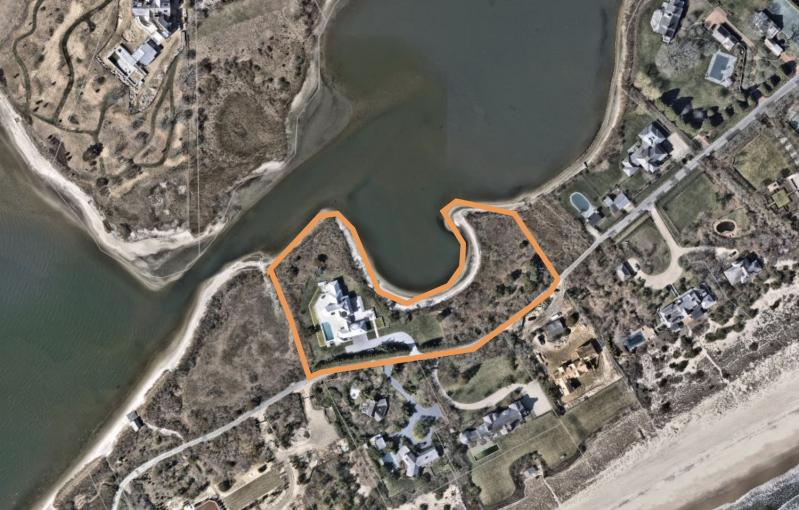It was a phragmites-removal project that turned bad and devolved into a six-year war between East Hampton Village and the billionaire real estate developer Harry Macklowe.
Now, with a new application that will be presented to the village’s zoning board of appeals on May 9, Mr. Macklowe is attempting to put it all to bed.
If successful, his 2.71-acre, 64 West End Road property, which boasts 970 linear feet of frontage on Georgica Pond, could finally be cleared of violations, allowing the homeowner to obtain a certificate of occupancy and sell. The house, which offers “a lifestyle of unparalleled luxury and tranquillity,” according to the listing, is listed for $32.5 million.
First, though, the Z.B.A. and Billy Hajek, the village planner, will have to agree that Mr. Macklowe’s new application, a mix of concessions, requests for forgiveness, and modifications to reduce environmental harm, is enough.
The village has long accused the billionaire of stripping his property of much of its native plants. He removed the phragmites, yes, but never followed through on an approved plan to revegetate the wetland. Instead, much of the area is lawn, straight down to the shoreline of Georgica Pond.
Further, when the building inspectors went to inspect the phragmites project, they noticed many other violations of the village’s wetland code: an extended patio and stairs, a retaining wall that had been modified and enlarged, landscape lighting, planting boxes, a kayak rack, and other issues for a property in such a sensitive environmental area. The location of the driveway had been shifted, and a pool equipment building had been converted into a pergola.
The fact that Mr. Macklowe seems to have painted every surface of the property, including the roof of the house, white, is not itself a violation, at least of village codes.
Part of the new application fixes the original sin — not revegetating after the phragmites removal — but Mr. Macklowe needs a new permit from the State Department of Environmental Conservation for that work. (The original permit from 2017 has long since lapsed.) That’s separate from an additional revegetation plan by Araiys Design, which proposes to add 17,262 square
feet, well over a third of an acre, of native plantings to the property.
Mr. Macklowe also proposes to remove a large patio on the pond side of the house and replace it with walkways, “approximately replicating what existed as pre-existing nonconforming structures in 2017,” according to an April 15 memo from Leonard Ackerman, whose law firm, Ackerman, Pachman, Brown, Goldstein & Margolin, L.L.P., is representing Mr. Macklowe.
The storage bin, kayak rack, landscape lighting, and drainage pipes, which presumably take water collected from the roof and send it directly into the pond, will be removed. The pipes were discovered only after the phragmites were cleared and may predate Mr. Macklowe’s residency. Regardless, draining a roof into a pond is a no-no. Instead, a drainage system will collect stormwater in underground chambers closer to the house.
A septic tank will be removed and replaced with a new low-nitrogen system, which the Z.B.A. will likely view as an environmental boon to the pond.
On the other hand, Mr. Macklowe is asking for retroactive approval for the retaining wall he built; as well as for the pergola, a stair and patio rebuilt on the northern side of the house, a pool equipment enclosure, a driveway gate, and other changes he made to the driveway.
The parcel was first developed in 1986 and the house is largely the same; however, it could not be built under current zoning laws. “The entire parcel lies within 150 feet of the landward edge of the wetlands,” reads the law memo. “There is no conforming building envelope that is outside of the wetlands setback.”
When reached by phone Tuesday, Mr. Hajek wouldn’t speculate about the chances of the zoning board wiping out the violations. He did say that if the board ultimately approves Mr. Macklowe’s plans, he would have 90 days to obtain a building permit and fix the issues.
“If it doesn’t happen in 90 days, it would be a matter for the Justice Court again. It would remain in violation.”




